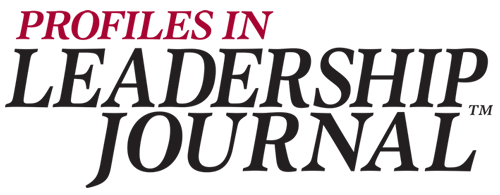By Amy West

Securing a corporate board seat is not an easy path—especially for women and those coming from nontraditional backgrounds. Women hold only 33.5% of S&P 500 board seats, and for those who don’t fit the traditional CFO or CEO mold, the journey requires intention, strategy, and persistence.
I’m still on that journey.
Public board service is a long-term goal, but I believe that the experience I’m gaining now—on advisory and nonprofit boards—is a critical part of that path. Some argue that these roles don’t count when it comes to landing a corporate board position, but I see it differently and so do many others. The governance experience, strategic decision-making, and leadership skills I’ve developed in these roles are shaping me into the kind of board member companies need.
I didn’t start with a master plan, but each step along the way has reinforced why this work matters—and how it’s preparing me for what’s next and how my experience can contribute to shaping the future.
Finding My Path to Board Service
My first board experiences weren’t in corporate boardrooms but in the nonprofit and volunteer world. I served as the chair of a Presbyterian Women’s Committee, helping raise funds for missions, and later joined Stray Cat Blues, a non-profit cat rescue where I’ve been an active volunteer and board participant for the last 20 years, supporting marketing, fundraising, and operations. These weren’t high-profile board seats, but they gave me something critical: exposure to governance, strategic planning, financial planning, and the responsibility of influencing an organization’s direction.
Even in these early roles, I noticed inefficiencies—meetings that lacked structure, unclear decision-making processes, and a need for more defined strategic focus, priorities, metrics, and measurement. I applied the same principles I used in my corporate roles, introducing structured agendas and execution-focused approaches that have become embedded as standard operational procedures.
Do Advisory Boards Actually Help?
There’s an ongoing debate in board circles: Does serving on advisory or nonprofit boards prepare you for public board roles? Some argue that corporate boards look for specific financial or operational expertise that advisory roles don’t provide. But I’ve found that these experiences offer critical preparation—if approached strategically.
Through my work on advisory boards, I’ve had the opportunity to contribute at a high level—helping companies navigate regulatory challenges, refine go-to-market strategies, and engage investors. I’ve seen firsthand how board members help shape an organization’s future, a responsibility that requires more than just business acumen.
Advisory boards have helped me develop skills that are essential for any board role: the ability to see the big picture, provide guidance without overstepping, and collaborate with leadership teams to move an organization forward. They have also introduced me to a network of decision-makers, executives, and investors who are shaping the industries I care about.
More importantly, they’ve reinforced an essential lesson: Corporate boards want problem-solvers. They aren’t just looking for impressive resumes—they need directors who can assess challenges, ask the right questions, and help guide organizations toward sustainable growth.
Serving on advisory boards has given me the opportunity to practice this in real-time, working with organizations at pivotal moments in their evolution.
The Landscape Is Changing—But Slowly
Women and executives from non-traditional backgrounds still face systemic barriers when it comes to board access. However, there’s momentum for change.
Nasdaq now requires companies to disclose board diversity data, and investor pressure is pushing organizations to prioritize diverse leadership. In industries like healthcare and digital health, the pace of transformation is driving demand for board members who understand technology, innovation, and regulatory shifts—areas where many emerging leaders bring deep expertise.
These shifts are creating opportunities, but breaking into board service still requires a proactive strategy. Companies need directors who bring fresh perspectives, and positioning yourself as the right candidate takes planning, persistence, and visibility.
Advice for Those on the Board Journey
For anyone interested in board service, my biggest advice is: Start now. Many assume that board seats come as a byproduct of career success, but the reality is that intentional planning and positioning are key.
The first step is understanding your value proposition. Boards don’t just seek executives; they need directors who fill specific skill gaps. Whether it’s digital transformation, regulatory expertise, or financial acumen, knowing what you bring to the table is essential.
Expanding your network is just as important. Many board appointments happen through personal connections, and organizations like illumyn Impact (formerly Him For Her) and theBoardlist help match board-ready candidates with companies. Actively engaging with board-related groups, speaking at industry events, and building relationships with sitting board members can open doors.
Finally, hands-on governance experience matters. Even if a nonprofit or advisory board isn’t your ultimate goal, it strengthens your ability to contribute in governance settings and provides exposure to financial oversight, risk management, and strategic decision-making—all key qualifications for corporate boards.
What’s Next?
My journey to a corporate board seat is still evolving, but every experience along the way has reinforced why this is a path worth pursuing.
The healthcare industry is undergoing seismic shifts, from the rise of AI in clinical settings to new regulatory frameworks around digital health—and boards need leaders who understand these changes. Companies increasingly seek directors who bring industry expertise beyond traditional finance and legal backgrounds.





